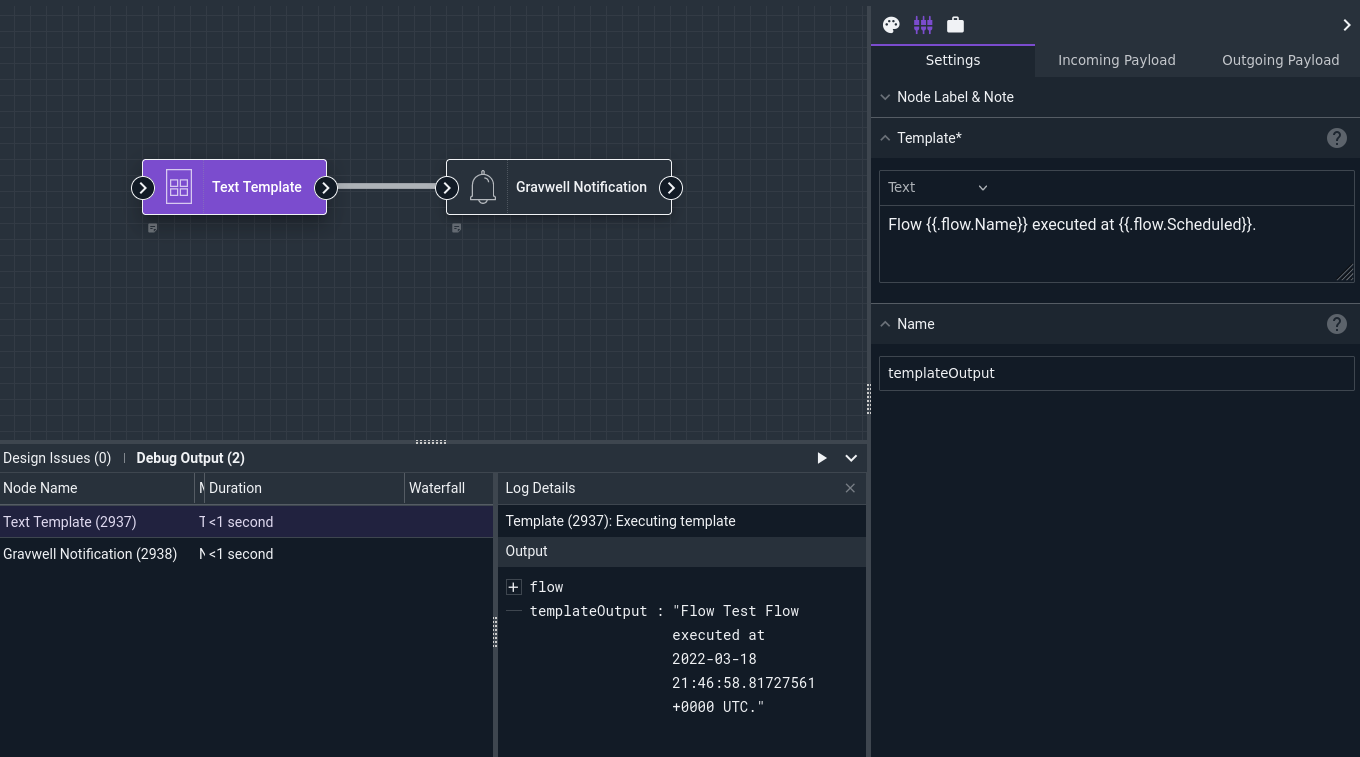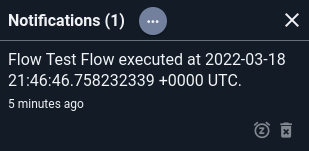Text Template Node#
The Text Template node can format text using the Go text/template library. Using this node, you can generate text combining elements from the payload for display as a notification or as the body of an email. A Text Template node can be used to manually craft data into almost any text based form, everything from building out custom HTML templates for an HTML email to manually building JSON objects that might have to fit a very specific format.
Text Templates implement a version of the Mustache Template System, which is essentially formatting language which is designed to allow embedded logic, control flow, and data access directly in a schema. The Gravwell Text Template flow node uses the Go text/template package and more or less implements a standard Mustache system.
Note
A word of caution, the Text Template node is as much a sledgehammer as the regex search module; it can do almost anything with enough brute force.
Configuration#
Template, required: the Go text template to be applied by the node. The template cursor is set to the payload, meaning that values in the payload can be accessed in the template:Flow name is {{.flow.Name}}.Name: the name to use for the output in the payload, defaulttemplateOutput.
Output#
The node inserts a value into the payload using the name specified in the Name config variable.
Usage#
When a text template executes it has access to all flow payload variables under the base dot (.) accessor; this means you can directly embed the name of your flow via .flow.Name. Paths in the payload system are case sensitive, so .name is a different variable than .Name. Templates can access any variable in the payload that has been produced “upstream” of the Text Template node.
The Go implementation of Mustache Templates includes a variety of control systems for iterating over arrays, performing conditional output, and even setting local variables. For a deep dive on examples see the package documentation on Actions.
Note
The text template requires a concrete type to interact with, so it is often necessary to pull data out of a search using GetTableResults or GetTextResults before working the data.
Example - Simple Notification#
This example generates a message containing the flow’s name & execution time, then sets a notification with that message:

Flow {{.flow.Name}} executed at {{.flow.Scheduled}}.
The resulting notification:

Example - Iterating Over Slice#
Text templates can iterate over slices of values; in this example we use the Get Table Results node to pull back a set of entries from a query using the table renderer and then iterate over them to output a set of headers and TSV rows:

Results from Flow: {{ .flow.Name }}
{{ range .tableResults.Headers }}{{ . }}\t{{ end }}
{{ range .tableResults.Data }}{{ range . }}{{ . }}\t{{ end }}
{{ end }}
The resulting data payload for our query of tag=gravwell syslog Hostname Appname | stats count by Hostname Appname | table Hostname Appname count would be:
Results from Flow: my test flow
Hostname Appname count
host1 webserver 6450
host2 indexer 29
host3 searchagent 124
Example - Using Embedded Template Functions#
The Text Template engine also has several standard embedded functions that can be called, including printf. This example shows using the printf function to print a slightly more elaborate header in our output:
{{printf "Running: %s (%q)\n" .flow.Name .flow.Description }}
{{printf "Scheduled every %v\n" .flow.Interval }}
{{printf "Last Run: %v\n" .flow.LastRun }}
The output is well formatted, taking native types into account:
Running: foobar ("foo to the bar")
Scheduled every 1h0m0s
Last Run: 2023-02-16 20:01:45.606580068 +0000 UTC
Example - Extracting Query Values#
The Text template can index into result data and extract specific values. This can be useful when using query result values for high level fields. This example shows running a query that looks for users with excessive login failures and sends an email with the user and failure rates in the subject line.
Notice that we have two distinct text templates that are producing two different outputs for our email. It is entirely valid to string together multiple text templates for different fields.

Excessive Login Failures {{index .tableResults.Data 0 0}} {{index .tableResults.Data 0 1}}
By providing two index values to the index operator we can extract a specific cell from a two dimensional table, in this case the username and failure counts for a query that generates a table.
The output is a well formatted subject line:
Excessive Login Failures Bob 13